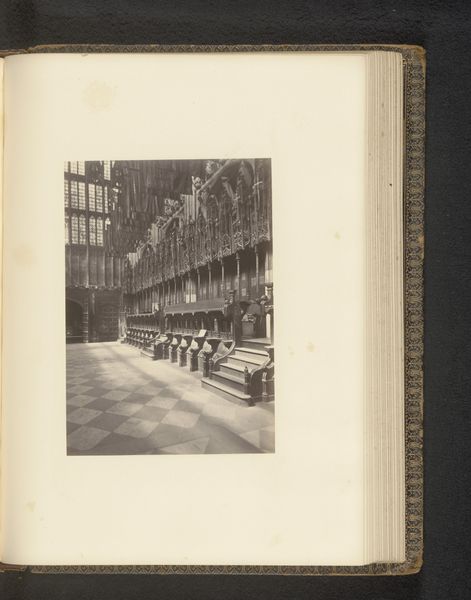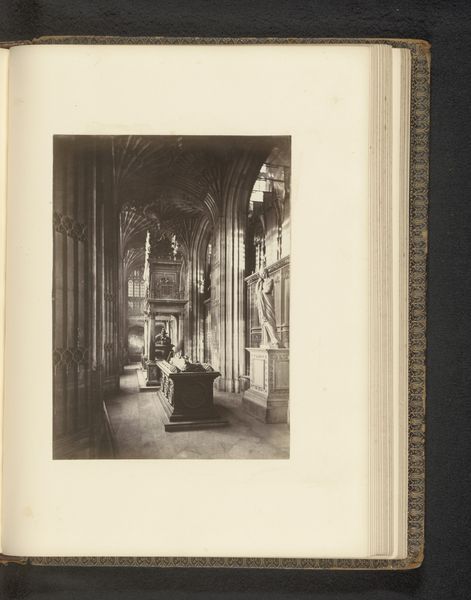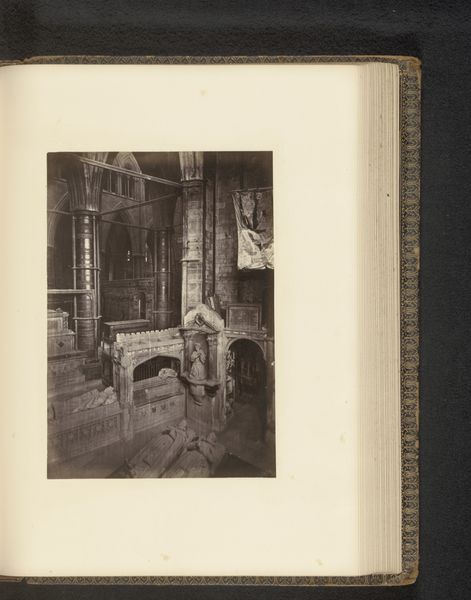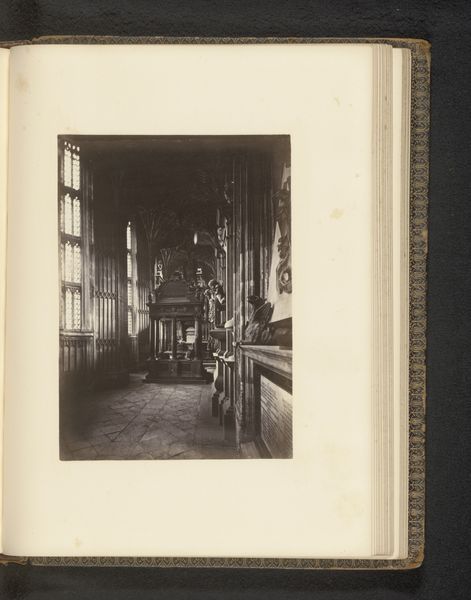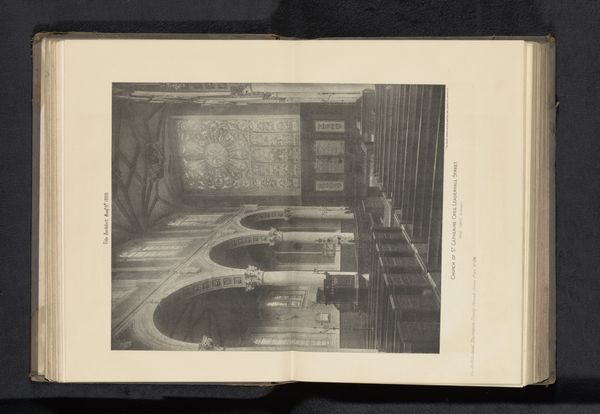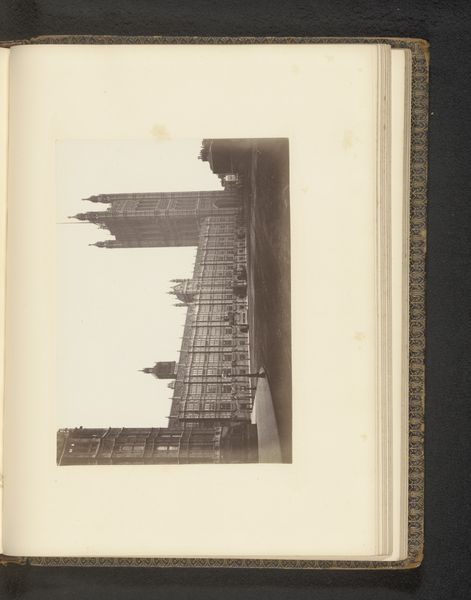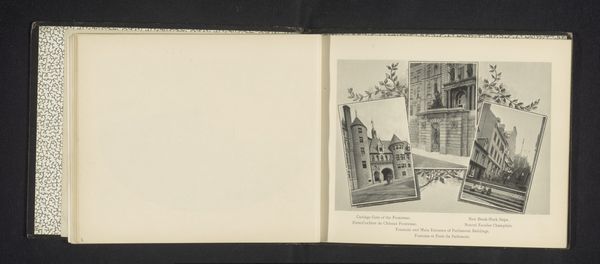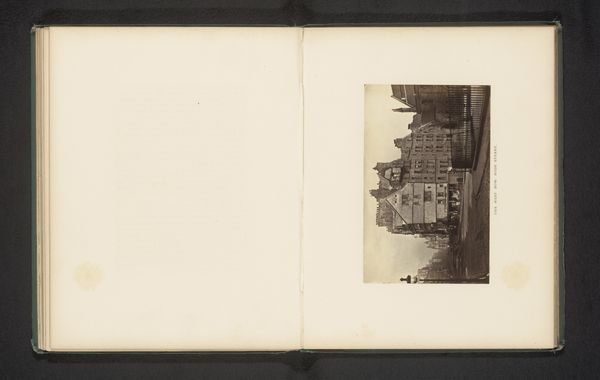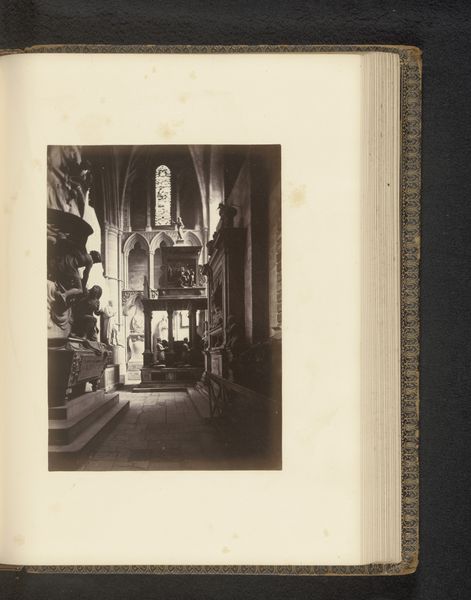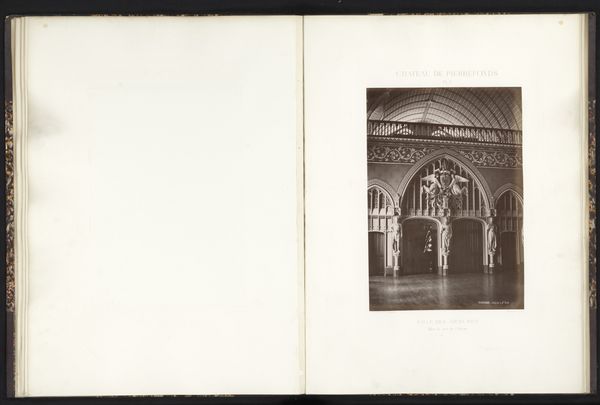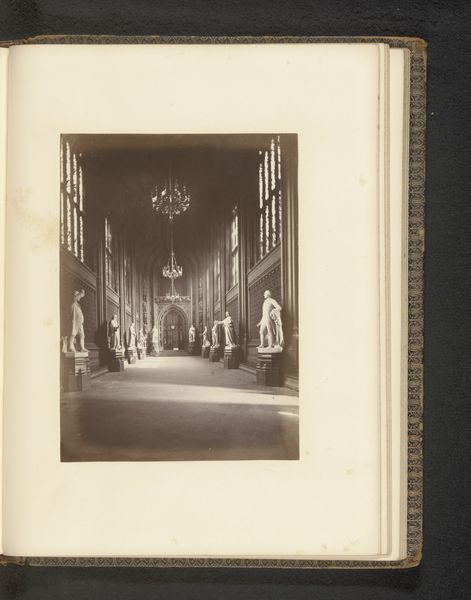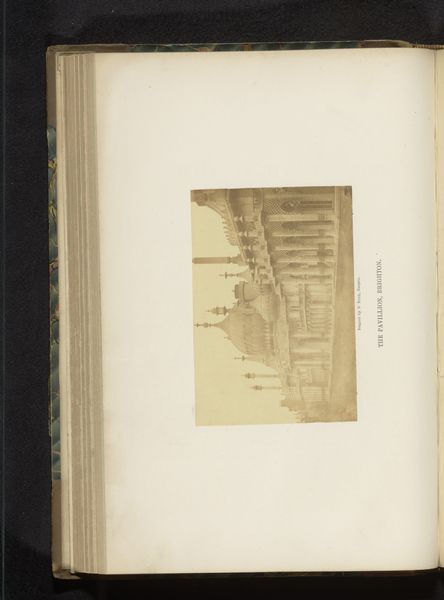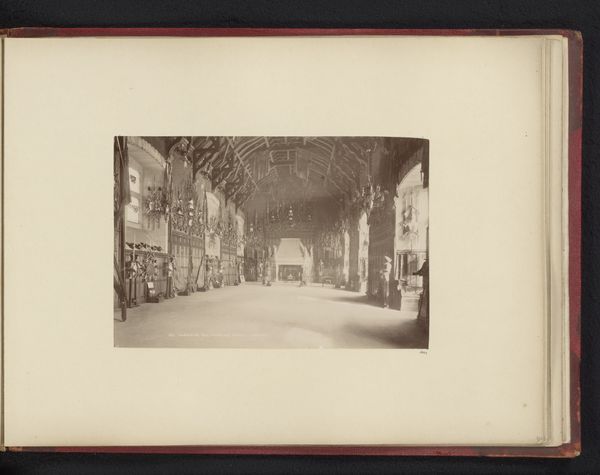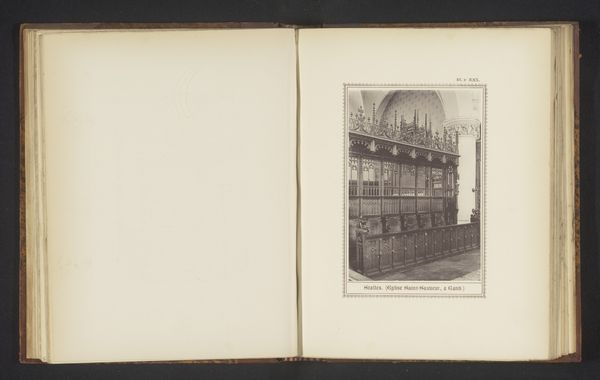
print, photography, gelatin-silver-print
# print
#
landscape
#
photography
#
ancient-mediterranean
#
gelatin-silver-print
#
history-painting
#
academic-art
Dimensions: height 195 mm, width 134 mm
Copyright: Rijks Museum: Open Domain
Editor: This gelatin-silver print, taken before 1869 by John Harrington, is titled “Tombe van Henry VII te Westminster Abbey,” which translates to "Tomb of Henry VII at Westminster Abbey." It’s presented as an image within a bound book, which makes the photograph feel so much more precious and intimate. It captures the elaborate details of the tomb in a somber, but strangely beautiful light. What jumps out at you? Curator: The choice to depict Henry VII’s tomb through photography at this particular moment is quite telling. We have to remember that Westminster Abbey itself is a powerful symbol of British history and power, and Henry VII represents a pivotal point in establishing the Tudor dynasty. Photography was still a relatively new medium then, still navigating its relationship to older forms of representation. Capturing such a monument signified an attempt to democratize access to it. How would seeing this image in a book affect its accessibility, do you think? Editor: That makes me consider who the audience would have been for such a photograph. Probably wealthier people? I guess even a photographic print would still have been more accessible to many than physically traveling to Westminster Abbey. What strikes me is the inherent tension: photographing a place so tied to tradition with this radically new medium. Curator: Exactly. Think about the politics embedded in this imagery. On one hand, the photograph offers a seemingly objective record, making it accessible in a new format. On the other hand, by being bound within a book for the privileged few, the image also reproduces existing hierarchies, subtly reinforcing ideas about who belongs within these historical narratives and structures of power. Photography also allowed for broader dissemination of these structures outside of the UK as a cultural commodity and artifact. What are your final thoughts? Editor: I hadn’t considered the implications of medium and access in this way before, thinking of the photograph as another tool of reinforcing existing class structures in this period! I learned a lot by analyzing the history through socio-political forces. Curator: And I believe I gained insight into how we can examine the dissemination of historical narrative with evolving image technology. Thank you for this chat.
Comments
No comments
Be the first to comment and join the conversation on the ultimate creative platform.
